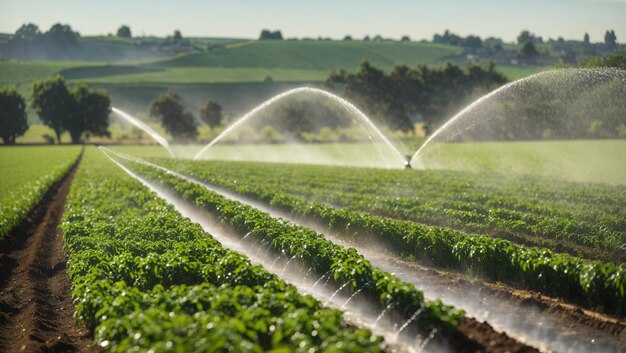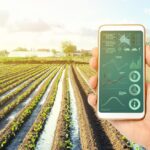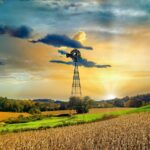Irrigation is one of the most crucial aspects of modern farming, ensuring that crops receive the right amount of water to thrive, especially in regions where rainfall is insufficient or unreliable. However, with a variety of irrigation systems available, selecting the right one for your crops can be a daunting task. The choice of irrigation system depends on factors such as crop type, soil conditions, water availability, and farm size. Here’s a guide to help you choose the right irrigation system for your crops.
1. Consider the Type of Crops You Are Growing
The water requirements of crops can vary significantly depending on the species, growth stage, and climate. Some crops, such as vegetables and fruits, have higher water demands, while others, like grains, require less frequent watering.
- High-water-demand crops: Crops like rice, tomatoes, and leafy greens require consistent and even watering throughout their growing season. For such crops, systems like drip or sprinkler irrigation work well.
- Low-water-demand crops: Drought-tolerant crops such as maize, millet, and certain legumes may thrive with less frequent irrigation, and more water-efficient systems like subsurface drip irrigation or furrow irrigation could be ideal.
By understanding the specific water requirements of your crops, you can select an irrigation system that meets their needs while minimizing water wastage.
2. Assess Your Farm’s Size and Layout
The scale of your farming operation plays a significant role in determining the most suitable irrigation system. For small-scale farms, portable or manual systems may be sufficient, while larger farms require automated or more efficient systems.
- Small farms: For small vegetable gardens or orchards, manual watering methods, such as hand watering with hoses or watering cans, might work if the farm is manageable. However, more automated solutions like drip irrigation or soaker hoses can still increase efficiency without a large investment.
- Large-scale farms: For larger operations, automated systems like center-pivot, linear-move, or drip irrigation are more efficient. These systems can cover extensive areas, saving time and labor while ensuring uniform water distribution.
The farm layout is also important. If your land is irregularly shaped or has uneven terrain, a system that can be adjusted, like sprinklers, may be necessary. A field with rows of crops can benefit from a drip irrigation system, while large open fields are better suited for center-pivot systems.
3. Evaluate Soil Type and Drainage
Soil type plays a crucial role in how water is absorbed, retained, and drained. Different soils have different water-holding capacities, and an irrigation system must complement the soil type to ensure efficient water use.
- Sandy soils: Sandy soils drain quickly, meaning water is often lost before plants can absorb it. Drip irrigation or low-pressure sprinkler systems are ideal for sandy soils because they deliver water directly to the root zone and reduce evaporation losses.
- Clayey soils: Clay soils retain water for longer but can become waterlogged easily. Furrow or basin irrigation may be suitable for clayey soils to allow water to flow into the soil gradually. Drip irrigation with careful water management can also work effectively by delivering small amounts of water at a time.
- Loamy soils: Loam soils have good water retention properties and allow for better root penetration. Systems like sprinklers and drip irrigation work well in loamy soils, as they can distribute water evenly without causing waterlogging.
Understanding your soil type and its drainage properties will help you select an irrigation system that prevents over-watering or under-watering your crops.
4. Consider Water Availability and Quality
Water availability is a critical factor when selecting an irrigation system. Whether you rely on groundwater, surface water, or municipal sources, you need to ensure that the irrigation system you choose can handle the available water supply.
- Water availability: In areas where water is scarce, choosing a water-efficient system like drip irrigation can help maximize every drop. These systems deliver water directly to the plant roots, reducing water loss due to evaporation or runoff. In areas with abundant water, more extensive systems like center-pivot irrigation may be appropriate, though efficiency should still be prioritized.
- Water quality: Poor water quality, such as high salinity or the presence of contaminants, can clog irrigation systems and harm crops. In such cases, selecting a system with built-in filtration, such as drip or subsurface irrigation, is essential. Regular water quality testing can help determine if additional treatment or filtration is necessary.
Having a clear understanding of the water resources available on your farm will allow you to choose a system that uses the available water efficiently without damaging the crops.
5. Climate Considerations
Climate plays an important role in how water is managed on a farm. Areas that experience extreme heat or strong winds can cause high rates of evaporation, making some irrigation systems less effective.
- Hot and dry climates: In regions with hot and dry conditions, systems like drip irrigation or subsurface irrigation are ideal, as they minimize water loss due to evaporation. Drip irrigation also reduces water contact with the leaves, which can help avoid leaf burn in intense sun.
- Windy areas: In windy areas, sprinkler systems can be inefficient due to water being blown off-course. In these conditions, low-flow drip irrigation systems are more efficient, as they deliver water directly to the roots, avoiding evaporation.
By assessing the climatic conditions in your area, you can select an irrigation system that will minimize water wastage and prevent crop stress due to excessive heat or wind.
6. Budget and Maintenance Costs
Budget is an important consideration when selecting an irrigation system. While systems like drip irrigation and sprinklers are more affordable for small- to medium-scale farms, large-scale systems such as center-pivot or linear-move systems require a larger upfront investment.
- Installation costs: Drip irrigation systems generally have lower initial costs, making them a good choice for small or medium-sized farms. However, more advanced systems like center-pivot irrigation are more expensive to install but may be more cost-effective in the long run due to their ability to cover large areas efficiently.
- Ongoing maintenance: Some irrigation systems, especially drip and sprinkler systems, require regular maintenance to prevent clogging, leaks, or malfunctions. Ensure you factor in the long-term costs of maintenance, including labor, repairs, and replacement parts.
Balancing installation and maintenance costs with water efficiency will help you make the most cost-effective decision for your farming operation.
7. Automation and Technology Integration
Modern technology has revolutionized irrigation systems, allowing for greater efficiency and control. Automated systems can be controlled remotely, offering precise scheduling and water distribution based on crop needs.
- Automation benefits: Automated irrigation systems, such as smart controllers, allow farmers to schedule irrigation cycles based on weather forecasts, soil moisture levels, or crop growth stages. This reduces water waste and ensures crops receive adequate hydration.
- Remote sensing: Technologies like soil moisture sensors and weather stations can provide real-time data on soil conditions, helping farmers fine-tune their irrigation schedules.
By integrating smart technology, farmers can enhance water efficiency and ensure optimal growth conditions for their crops.
Selecting the right irrigation system for your crops involves considering multiple factors such as crop type, soil conditions, water availability, climate, and budget. By assessing these factors carefully, farmers can choose an irrigation system that maximizes water efficiency, reduces costs, and enhances crop productivity. Whether it’s a simple drip system for small gardens or an advanced automated sprinkler system for large-scale operations, the right choice will ensure that your crops receive the water they need to thrive, while also conserving valuable water resources.
Join 'Farmers Mag' WhatsApp Channel
Get the latest Farming news and tips delivered straight to your WhatsApp
CLICK HERE TO JOIN






